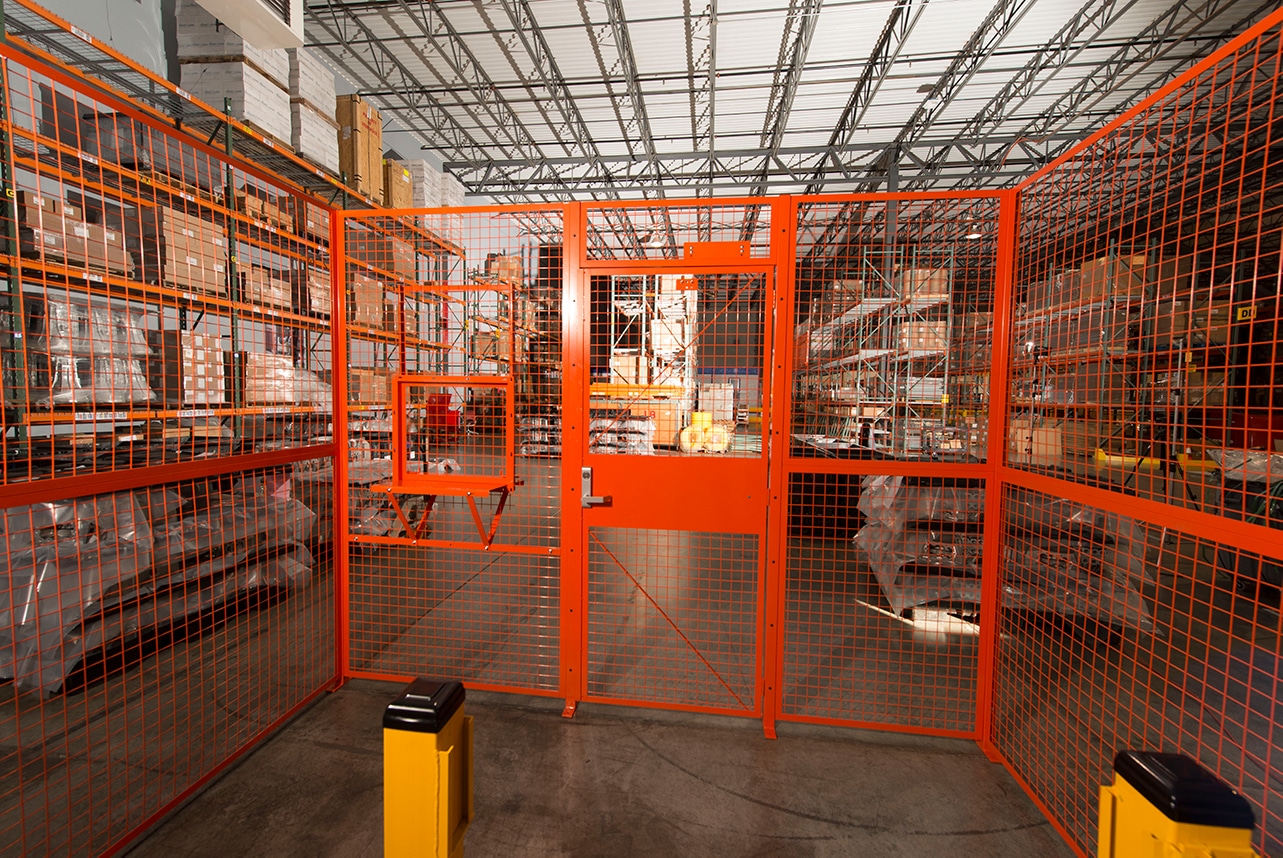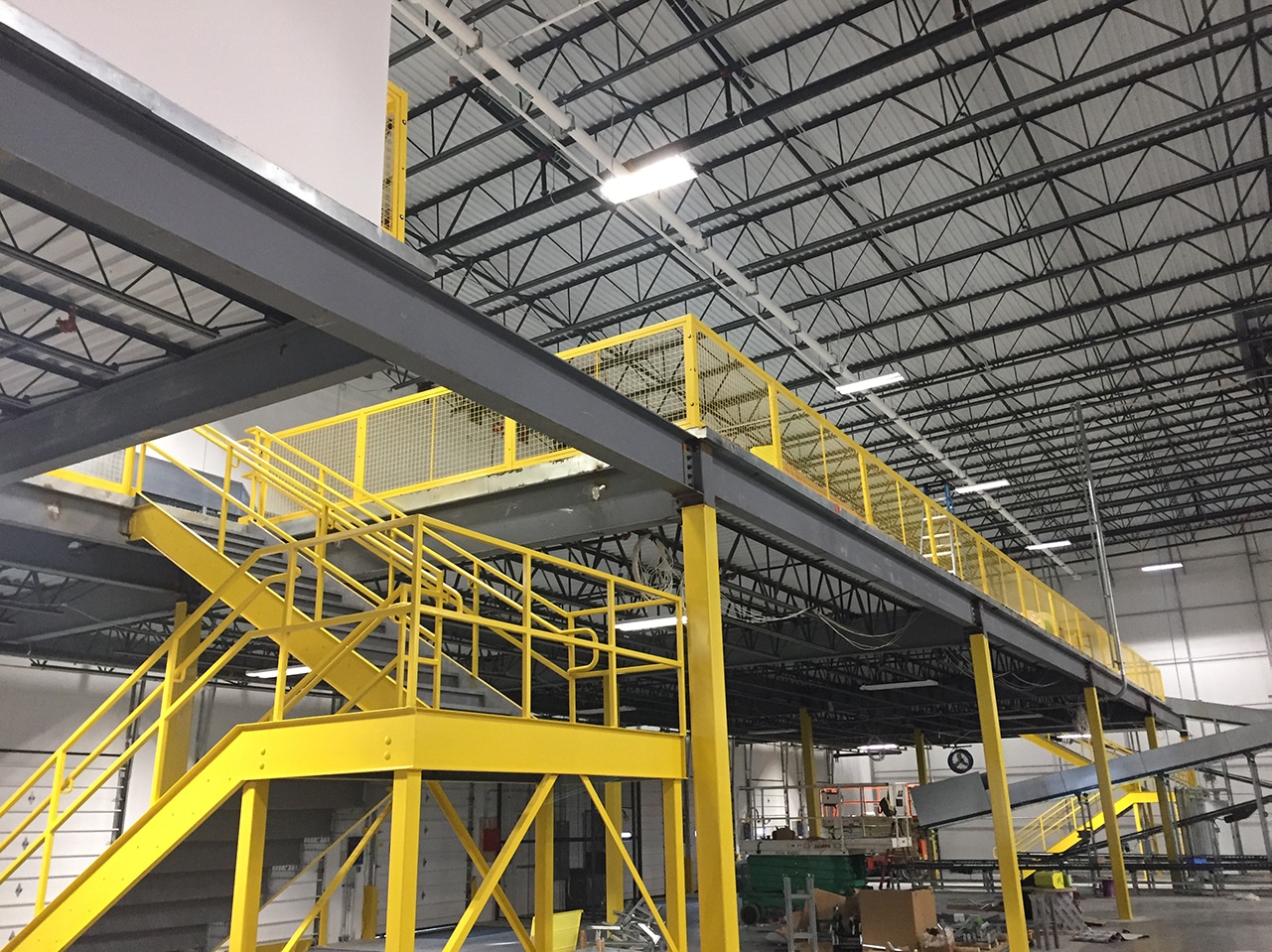
BeastWire Mesh Partitions are a cost-effective and flexibly designed solution to control unauthorized access into a facility. [Photo: Courtesy of BeastWire]
BeastWire security cages and barrier guards are revolutionizing the industry.
Already a leading manufacturer of wire partitions and area guarding solutions for commercial, residential, and military applications, Indiana-based SpaceGuard Products recently upped its game even more with BeastWire Mesh Guarding.
As the company’s Director of Business Development Ray Niemeyer explains, BeastWire was created by combining “the best features of different legacy product lines we had and integrating them into a universal product brand design with minimal parts that is easy to manufacture, easily delivered, and easily installed in a simple modular design.”
BeastWire systems are employed as barrier guards for robotics, machinery, conveyors, and vertical lift enclosures. They’re ideal as security cages to protect valuable tools, inventory, files, or supplies. They’re even government-approved to hold controlled pharmaceuticals and other types of seized substances. Additional applications include server cages for networking equipment; secured enclosures and physical barriers for bonded warehouses and military installations; weapon vaults for firearms and ammunition; evidence cages and property rooms; temporary holding cells for correctional institutions and data centers; and apartment storage cages. So whether it’s a 3-by-3-foot storage locker or a 500-linear-square-foot DEA warehouse cage, BeastWire—backed by a rare 10-year warranty—is perfect for the job.
These BeastWire benefits add up to constructing secure and adaptable storage spaces.
1. Strength
BeastWire’s 10- or 6-gauge welded wire design gives it extraordinary strength and integrity, even under duress. If it needs to be cut—for example, to accommodate piping—the wiring remains intact. That’s also true if it’s pushed inward several inches by, say, an errant warehouse forklift. “We’ve never had one of our systems fail from a structural perspective,” Niemeyer says. Chain-link fencing, on the other hand, is far more prone to failure. Because it’s woven rather than welded, the pieces are under tension. When damaged or cut, those pieces begin to sag and unravel, making spaces far less secure. Not so with BeastWire. Furthermore, Niemeyer notes, BeastWire posts and panels are connected on the secured side of the system, which prevents would-be thieves from unbolting the attachment hardware.
FROM OUR MAR+APR 2019 ISSUE
The preferred publication of leading green professionals.

BeastWire Mesh Lockers convert otherwise shared or unused spaces into onsite storage amenities for tenants. [Photo: Courtesy of BeastWire]
2. Easy Installation
BeastWire’s modular design cuts installation time in half. “Because you’re attaching the panels to a post and stacking them vertically, you’re not having to roll out and stretch chain-link fence while crimping it, clamping it, and keeping it taut at the same time,” Niemeyer says.
3. Sustainability
Locally sourced, BeastWire is made from recycled and virgin steel purchased in the U.S., primarily in the Ohio Valley—no more than 200 miles from SpaceGuard’s manufacturing facility. Its use in new construction or the rehab of older buildings can result in LEED credits or accreditation.

The BeastWire Mesh modular RailGuard system provides additional safety over traditional hand rail designs. [Photo: Courtesy of BeastWire]
4. Flexibility
BeastWire’s modular construction makes it simple to relocate or repurpose systems within a facility or off-site. And BeastWire cages are a snap to shrink or expand if needed (that means no cutting or buying new fencing). Niemeyer refers to a BeastWire installation for an Indianapolis freight expeditor and carrier with a bonded warehouse as an example. The company provides a staging area for product that comes in by air until that product can be delivered to a final destination. In order to meet insurance requirements and maintain customer confidence, the company has above-average security requirements.
In light of that, Niemeyer’s crew was enlisted to install a ceilinged, keycard protected BeastWire driver cage at the back loading dock door to prevent non-company drivers from entering the building without employee approval. After the initial cage was installed, the company decided to expand it. By incorporating existing parts with some new panels and posts, the BeastWire team quickly reconfigured the cage to hold more truck drivers waiting to be loaded or unloaded. Similarly modifying a chain-link fence, Niemeyer says, would have involved considerably more labor—and, consequently, greater cost.
Closing devices and door locks, too, are a breeze to swap out. By Niemeyer’s estimate, switching from a padlock hasp to a mortised key lock using a door panel’s existing opening pattern takes only 20 minutes or so. Non-BeastWire systems would require the purchase of a new door. And due to its open design, BeastWire takes advantage of ambient light, local HVAC systems for warming and cooling, and existing overhead sprinkler systems for fire suppression


